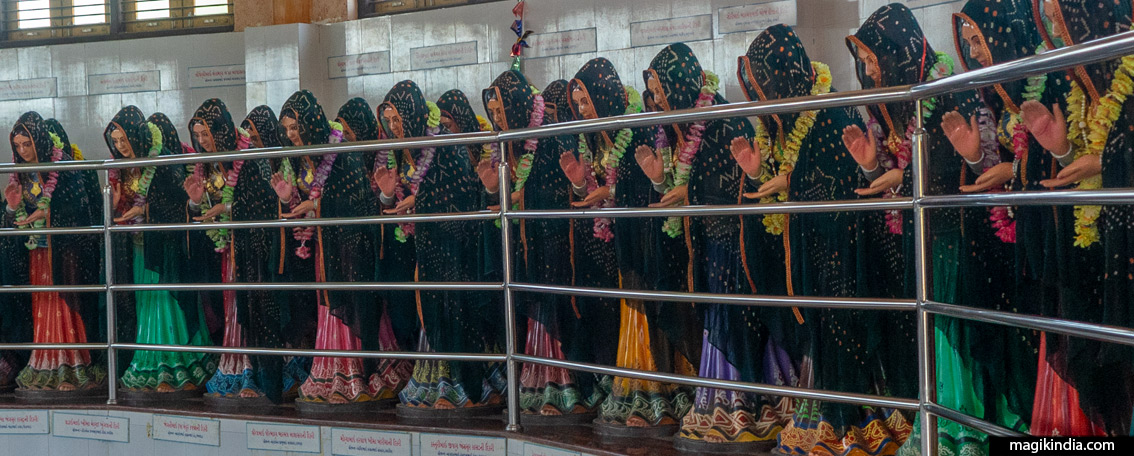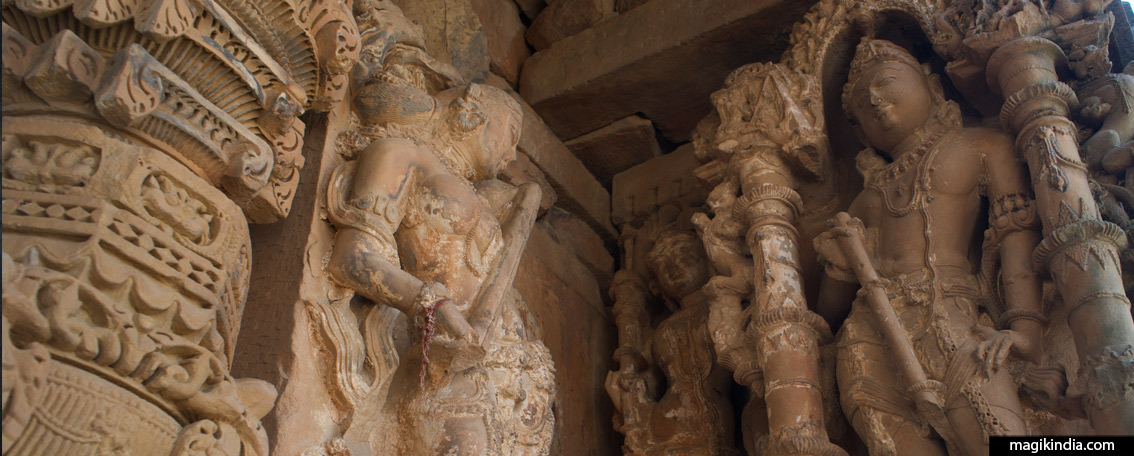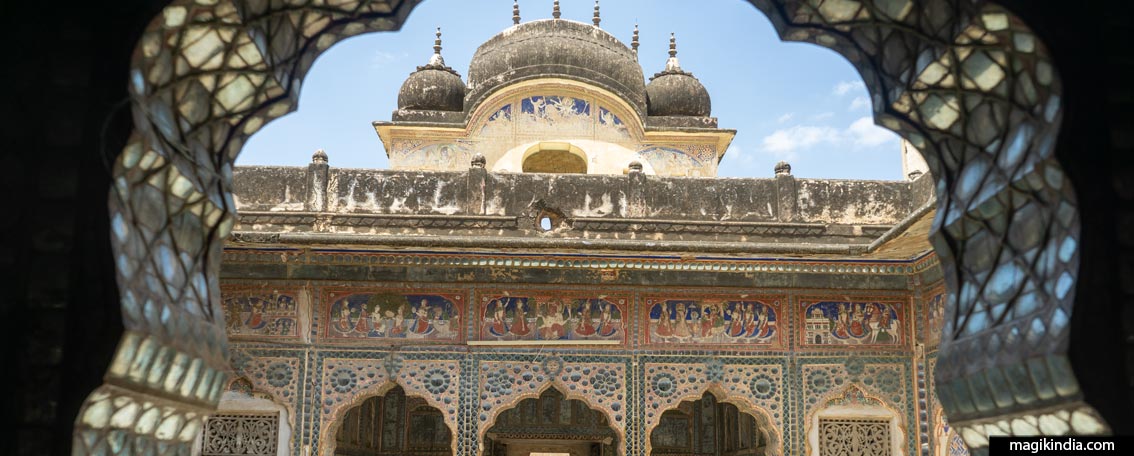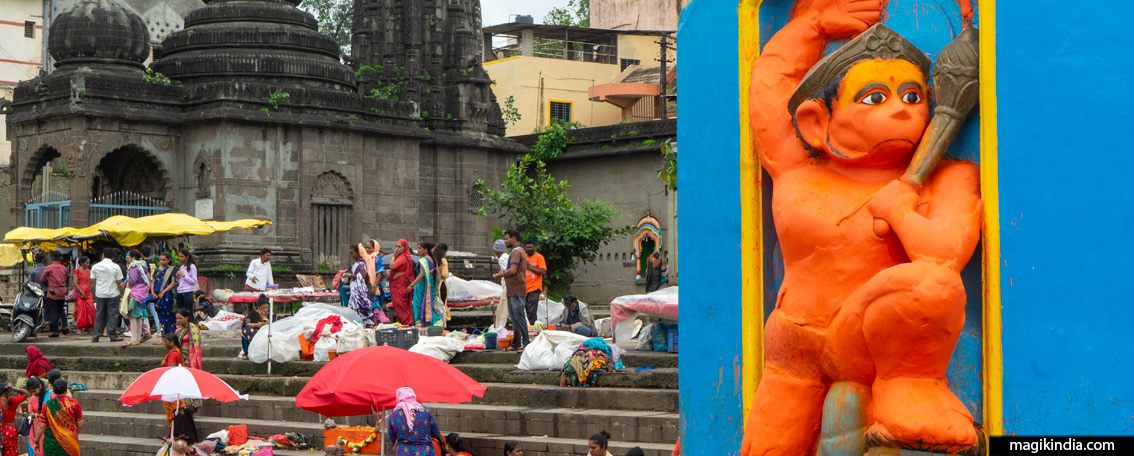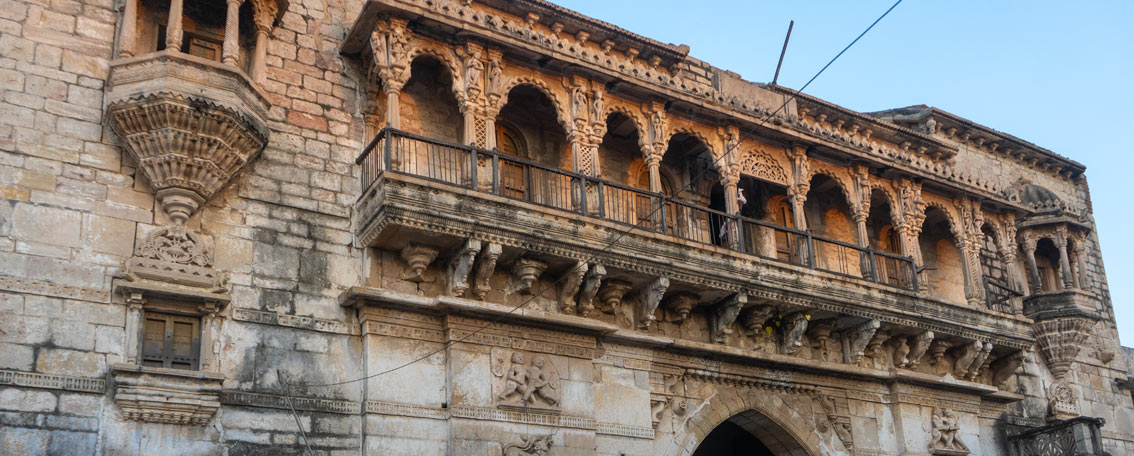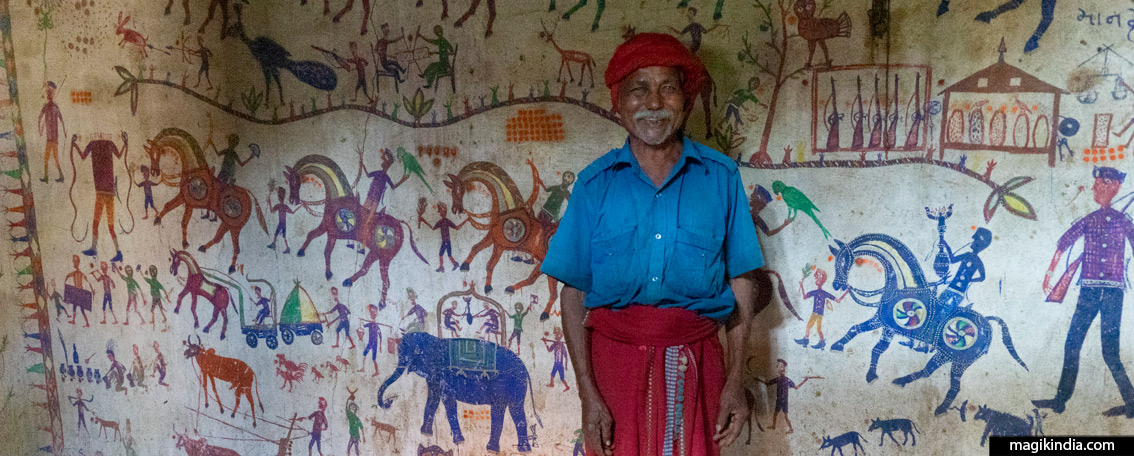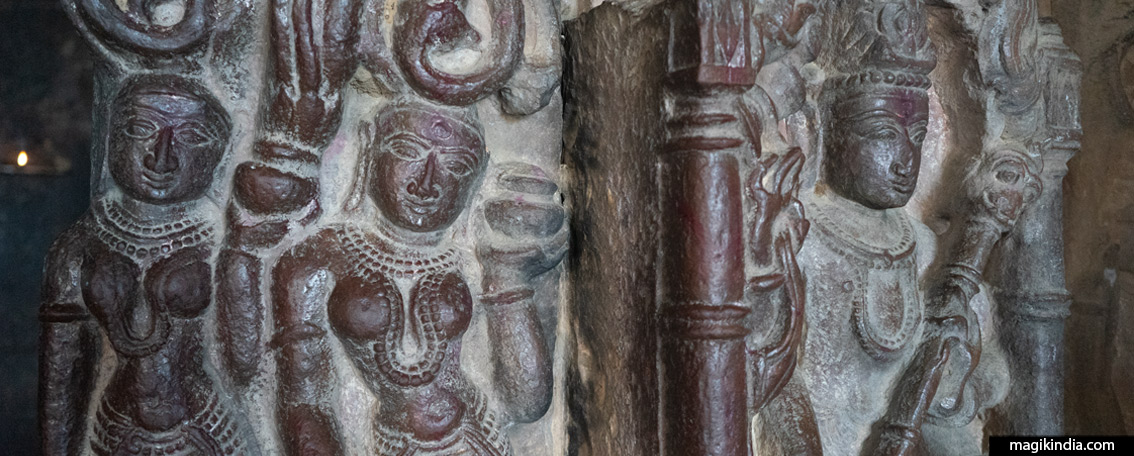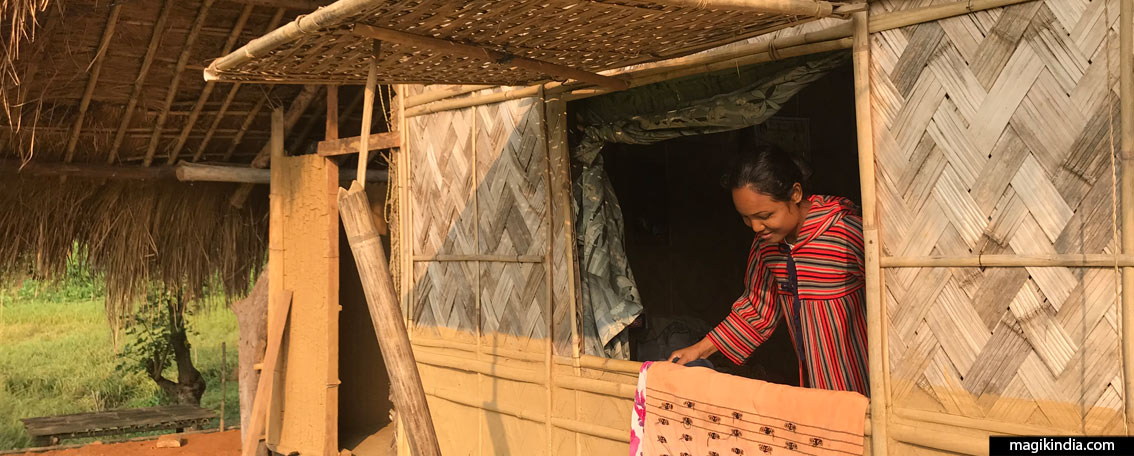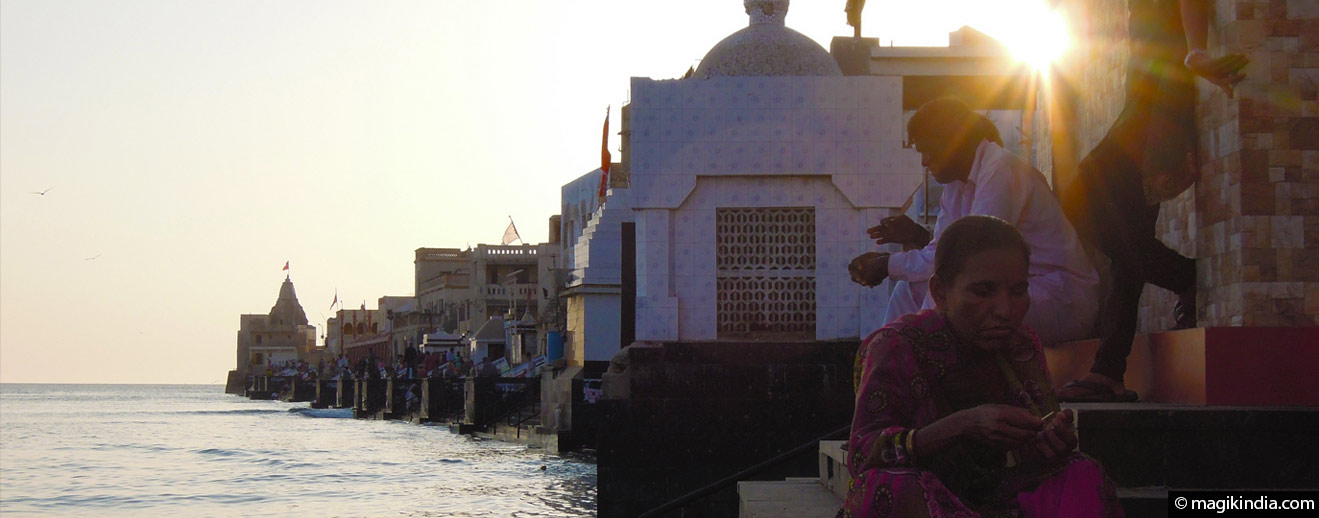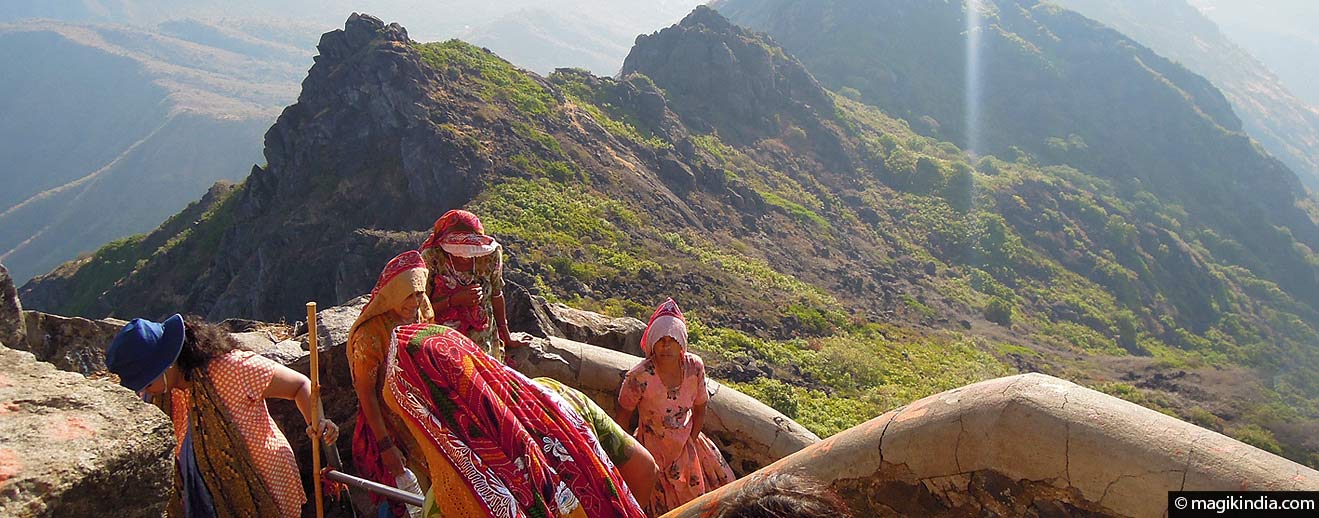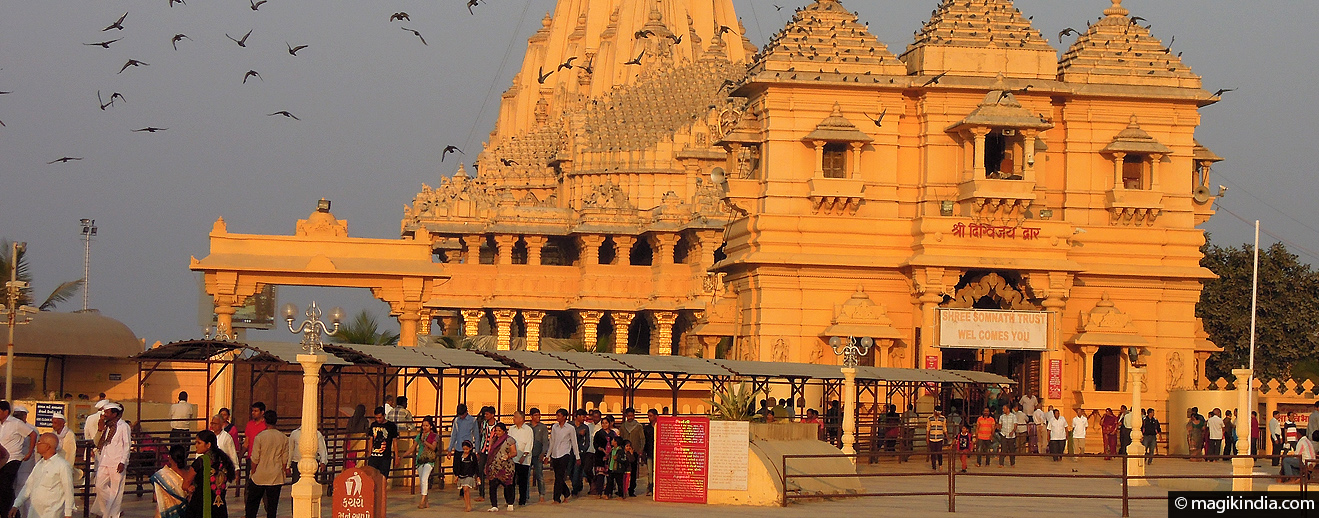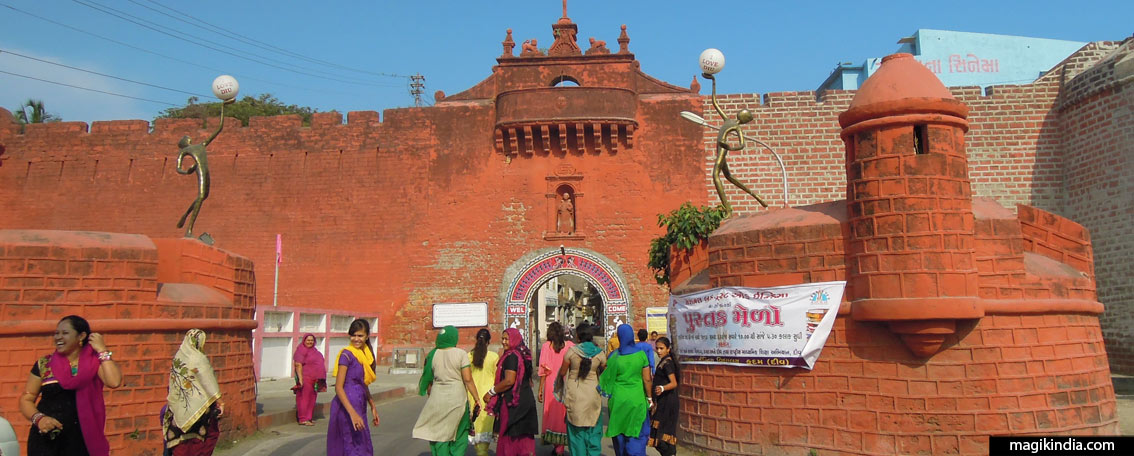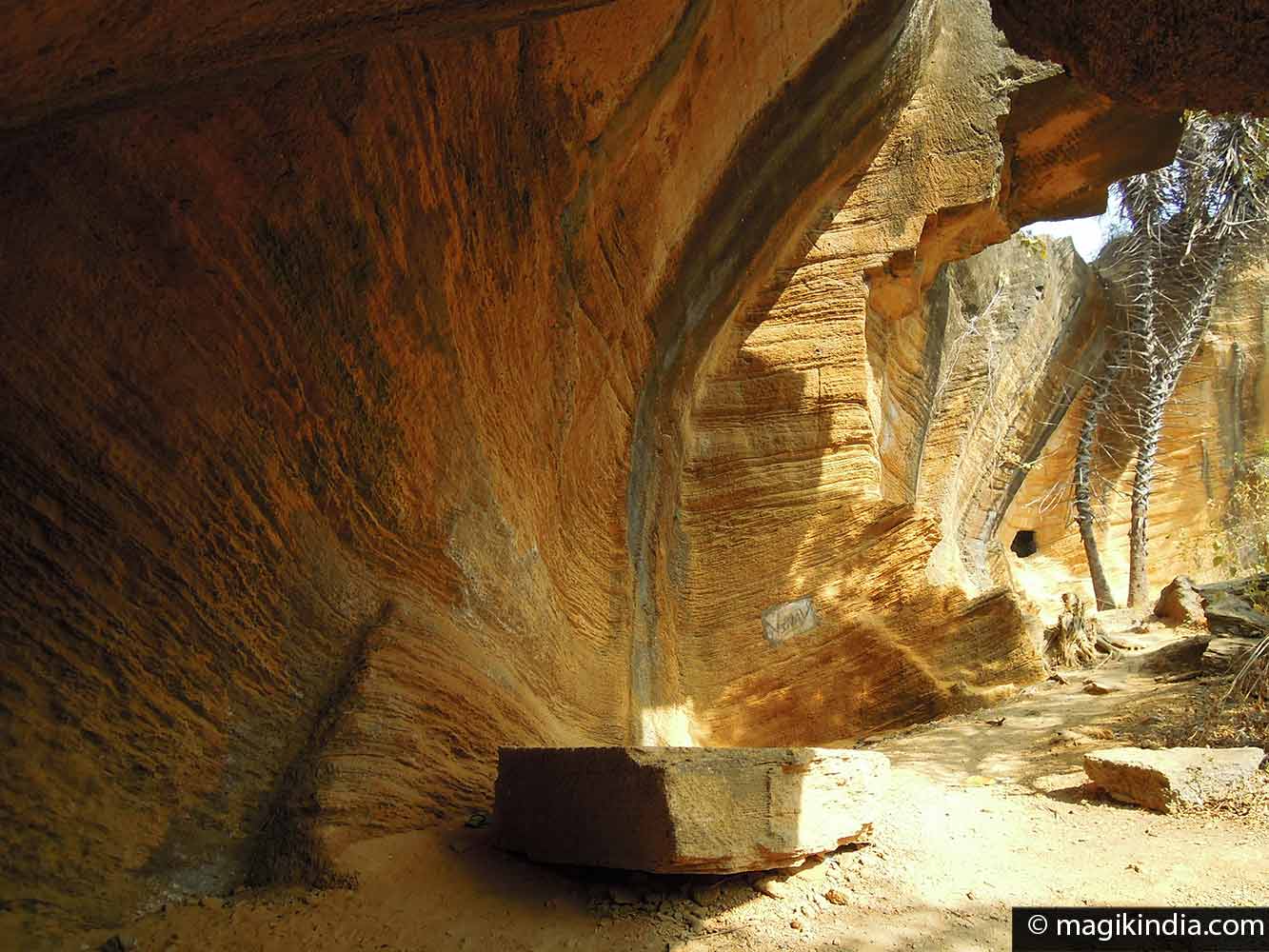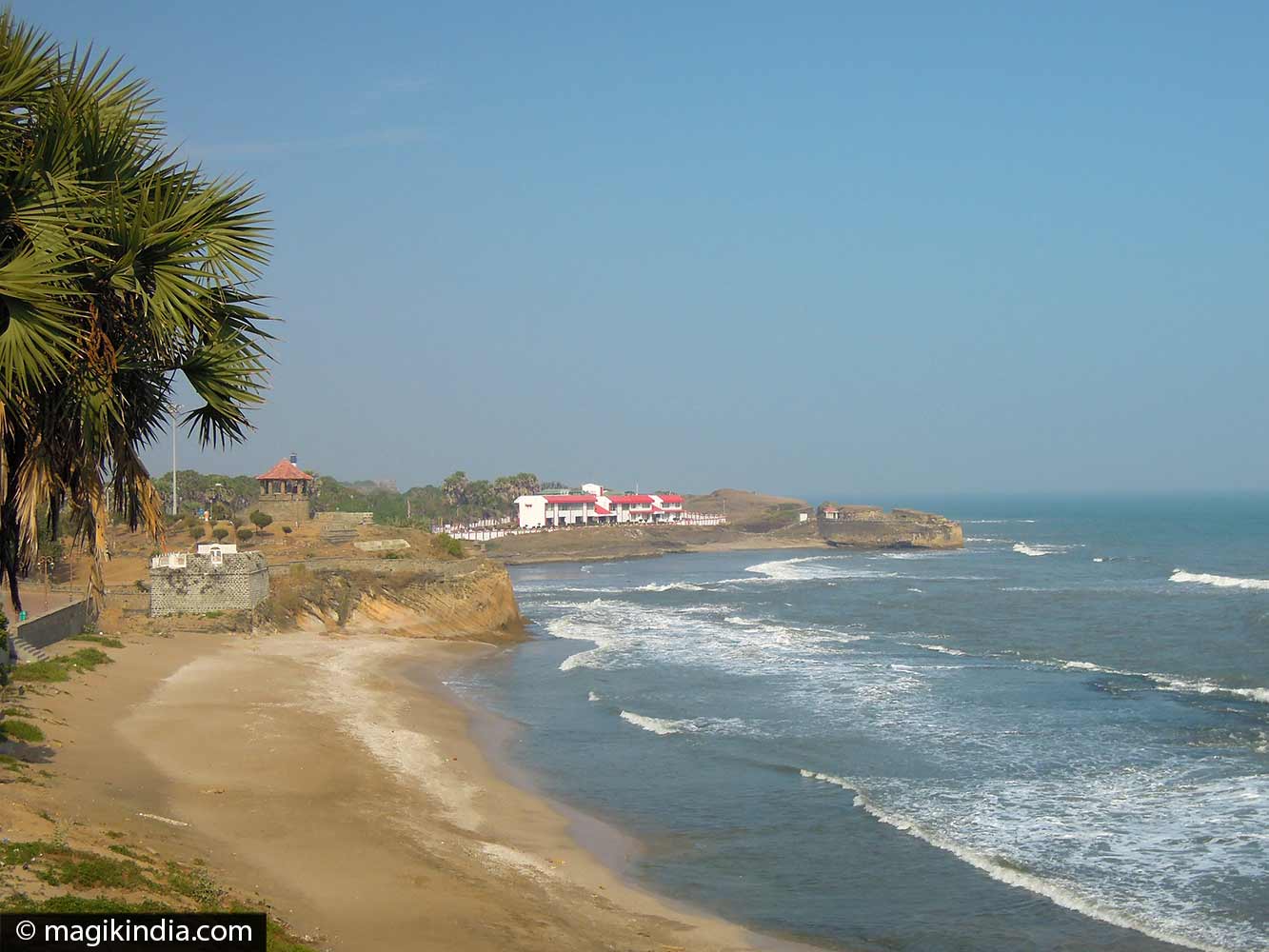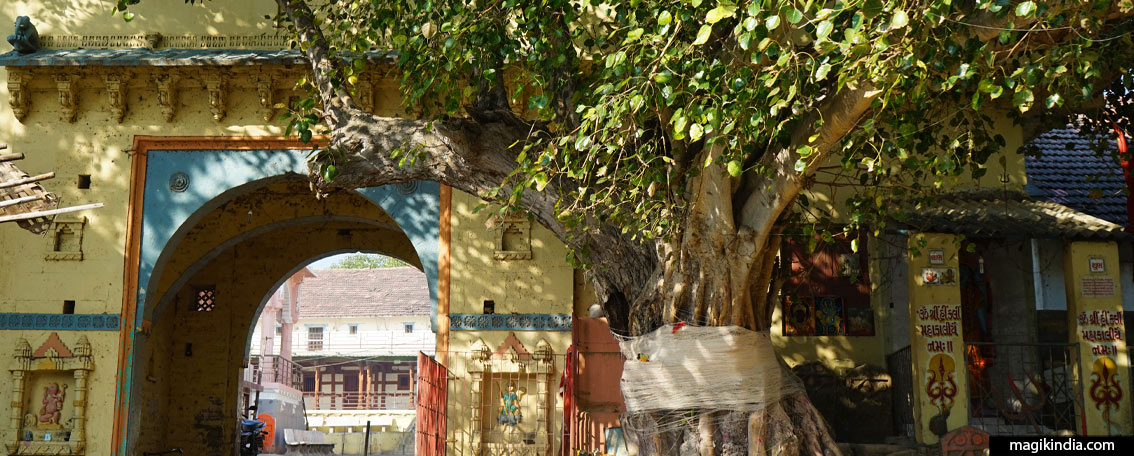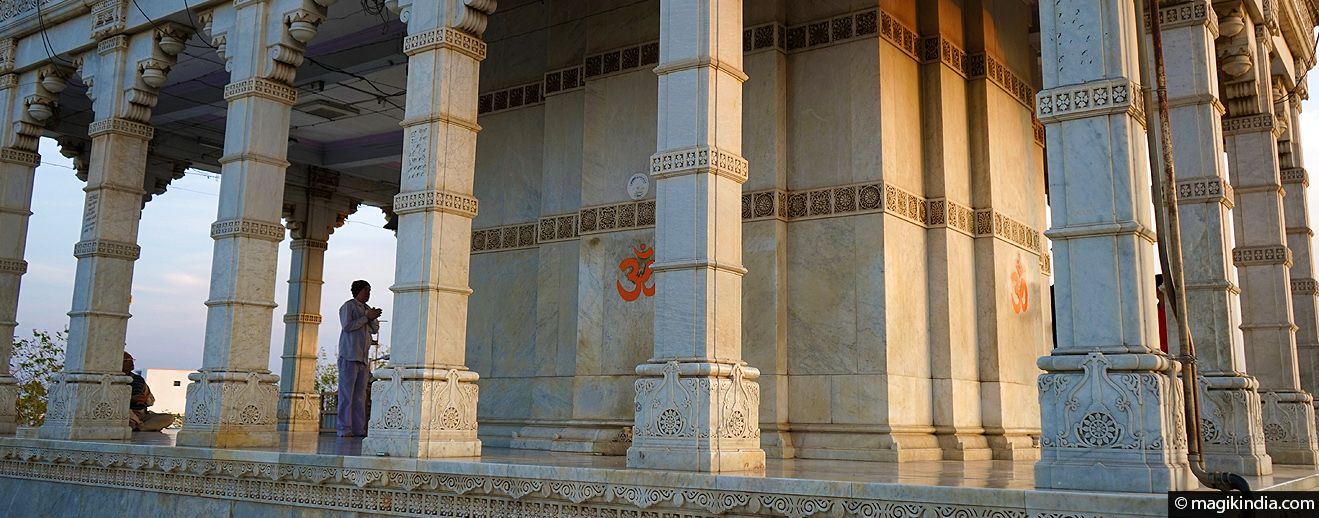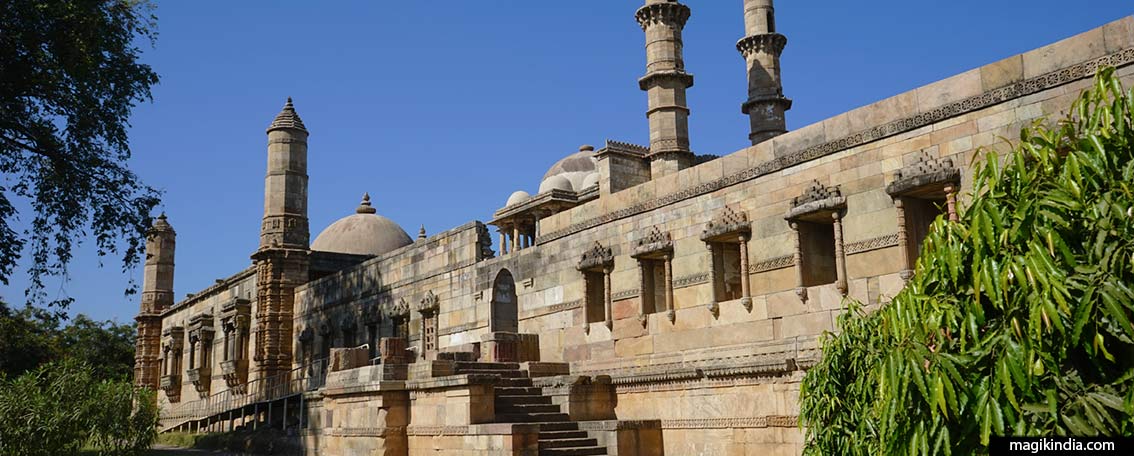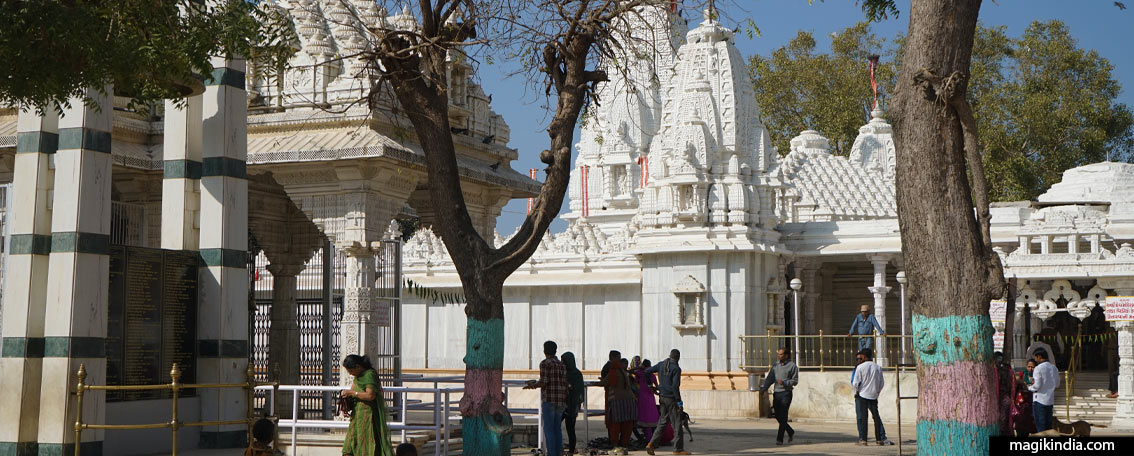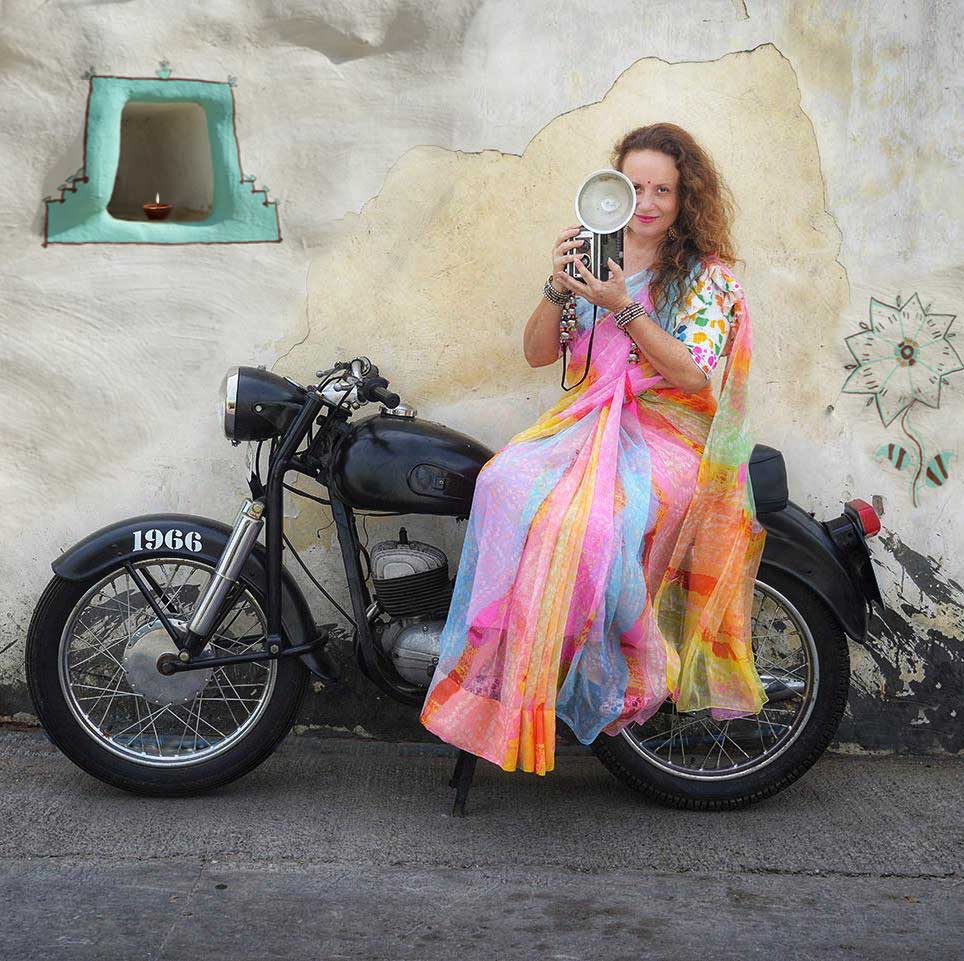
Namaskaram !
Welcome, Padharo ! I'm Mathini, a French woman who has been living in Rajasthan for 10 years. Despite being imbued with Indian culture from a young age it wasn't until 2014 that my Indian adventure really began. I left everything behind in France and set off on a 6-year journey through the land of Gandhi. These adventures are gathered in this blog which aspires, in an intentionally positive spirit, to bear witness to India's remarkably diverse and multifaceted cultural heritage. If this website sparks a desire to pack your bags and set off for an Indian adventure, it will have achieved its purpose. Subh Yatra on Magik India and beautiful explorations in the sacred land of Bharat...
Dwarka is a peaceful sacred town beside the Oman Sea where it’s nice to just laze around, especially along the ghats at sundown when the shellfish vendors gather there. Dwarka tells you about Lord Krishna’s story who founded his kingdom here, and about the mystic poetess Meerabai who said to have spiritually united with him there.
The temple at Somnath houses the “Lord of the moon”, foremost of the twelve Jyotir Lingams or “lingams of light”. Somnath lies on the Gujarat coast at Veraval and attracts millions of pilgrims every year.
Diu is a charming small town on the coast, decked with blue-and-white fronted baroque churches, reminding us that a few hundred years ago Portuguese caravels moored nearby.
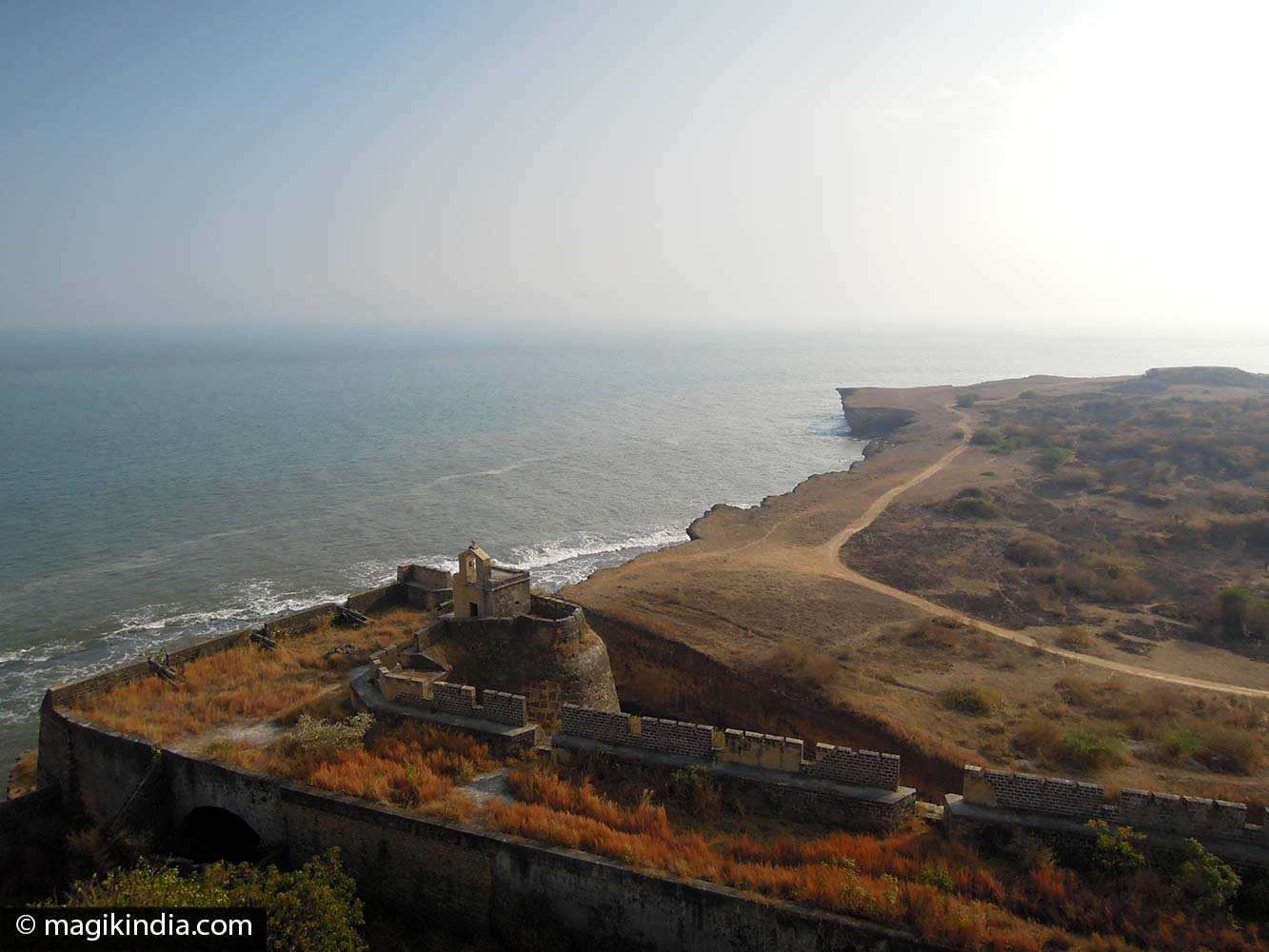
Diu is a former Portuguese trading post on a small island (40km2 ) just off the west coast of the Gulf of Cambay.
In 1535 Bahadur Shah, Sultan of Gujarat, concluded a defensive alliance with the Portuguese against the Mughal emperor Humayun. He offered Diu to the Portuguese in return for their military help. The Portuguese built a fortress there and established a garrison. The Shah regretted his generosity and tried several times to reconquer Diu, but in vain.
Diu remained under Portuguese control from 1535 to 1961, when it was handed over to the Union of India under Nehru.
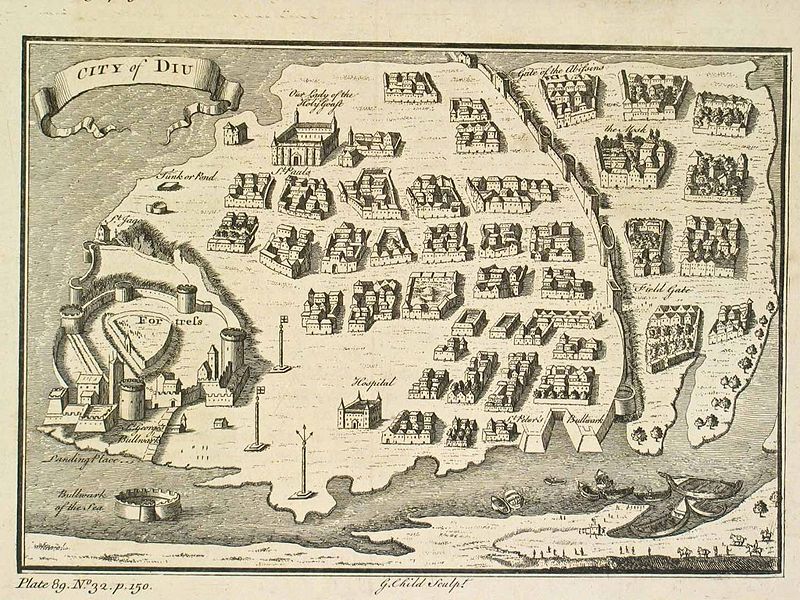
And now let’s visit Diu!
Zampa Gateway
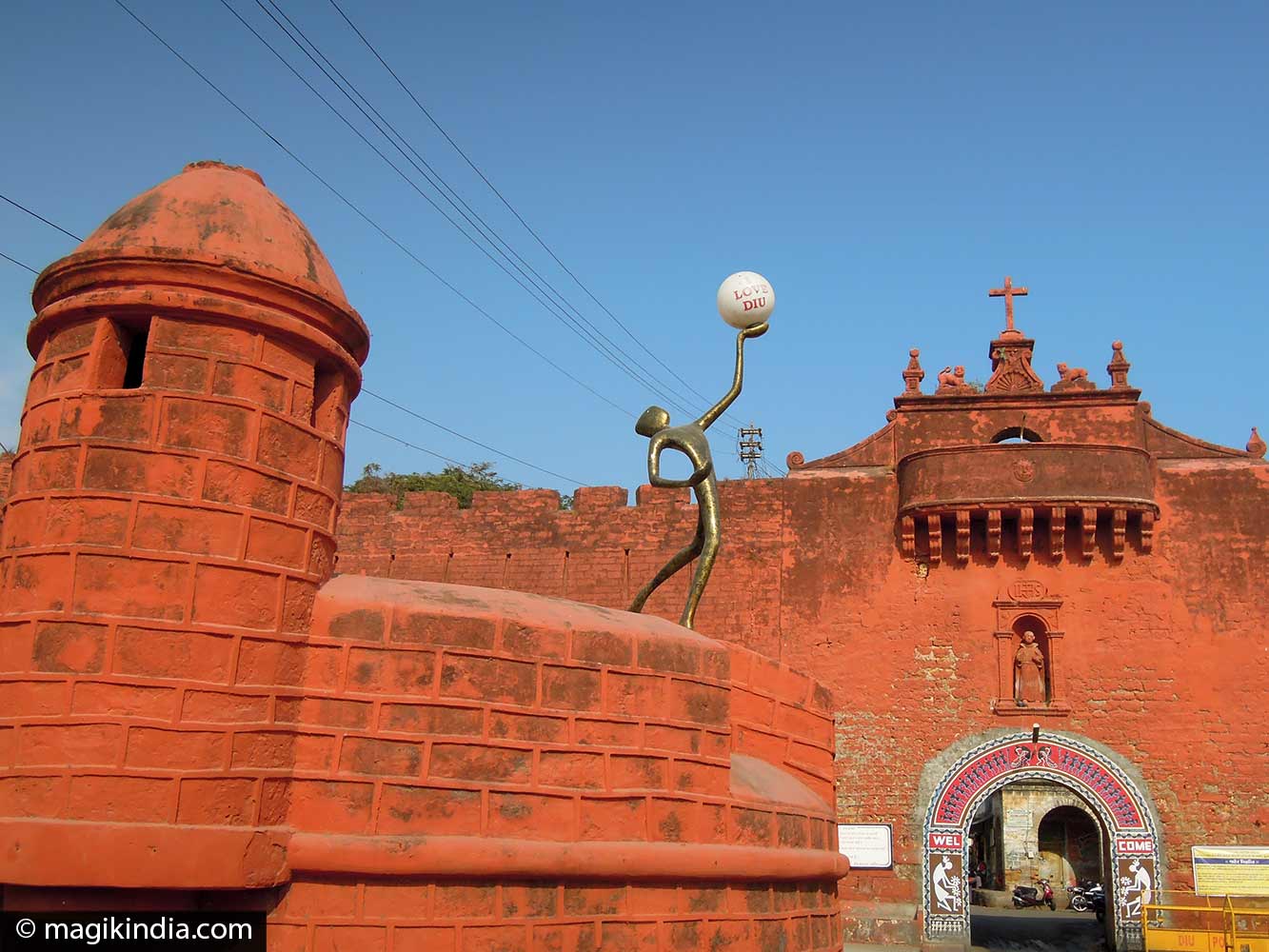
Zampa Gateway is the main entrance to the old town of Diu. One can’t fail to be intrigued by this gate built of astonishingly red brick. It is decorated with a statue of a priest, carved lions and tribal patterns. It even incorporates an 18th century chapel!
Diu Fort
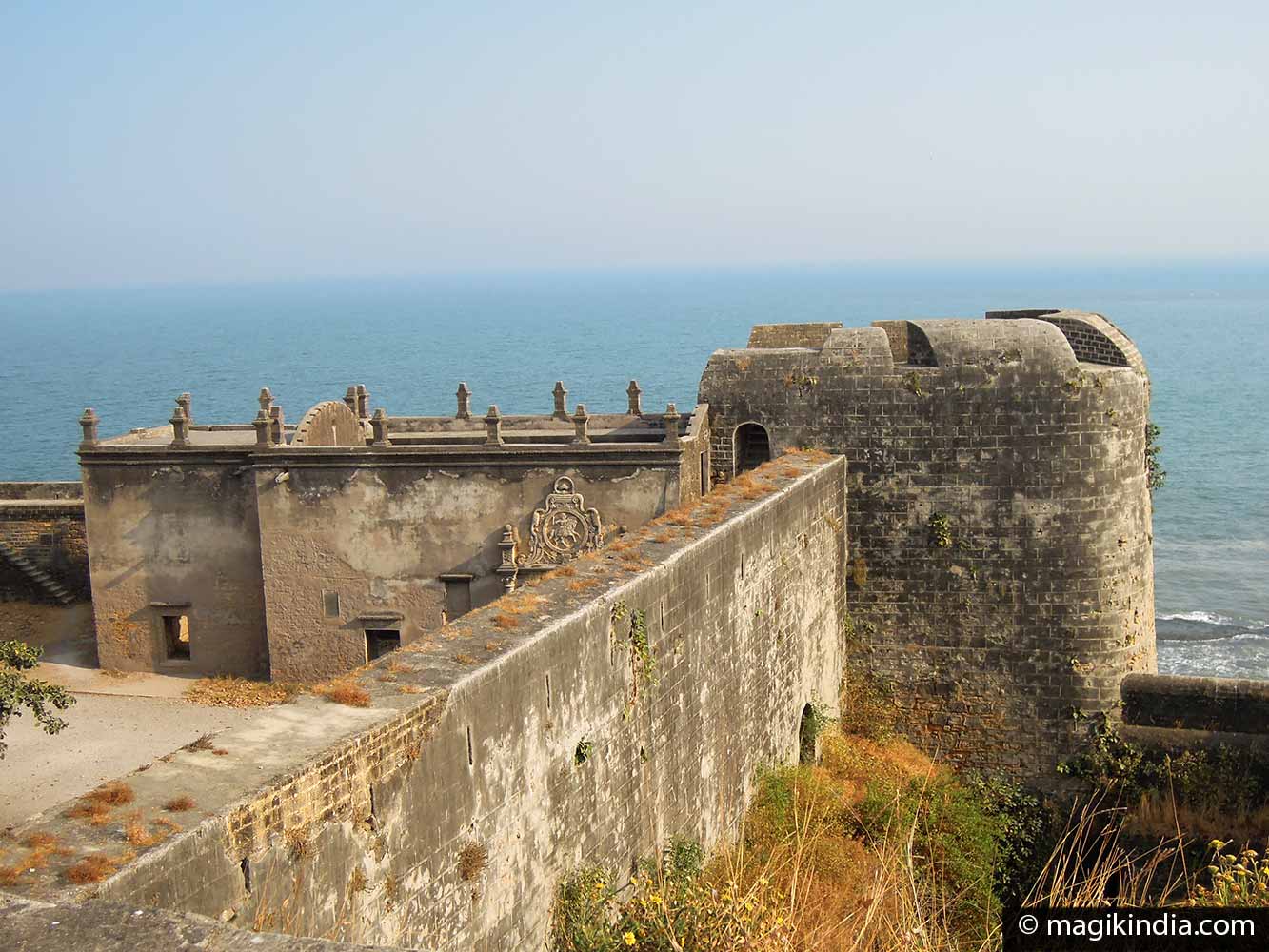
Diu Fort was built by the Portuguese in 1535, in exchange for their military assistance to the Sultan of Gujarat against the Mughal emperor Humayun.
The Portuguese had long wanted to land on the island to expand their trade and had already tried three times to take the island by force, without success.
The fort is an imposing structure on the coast of Diu Island. It enjoys a magnificent view of the sea.
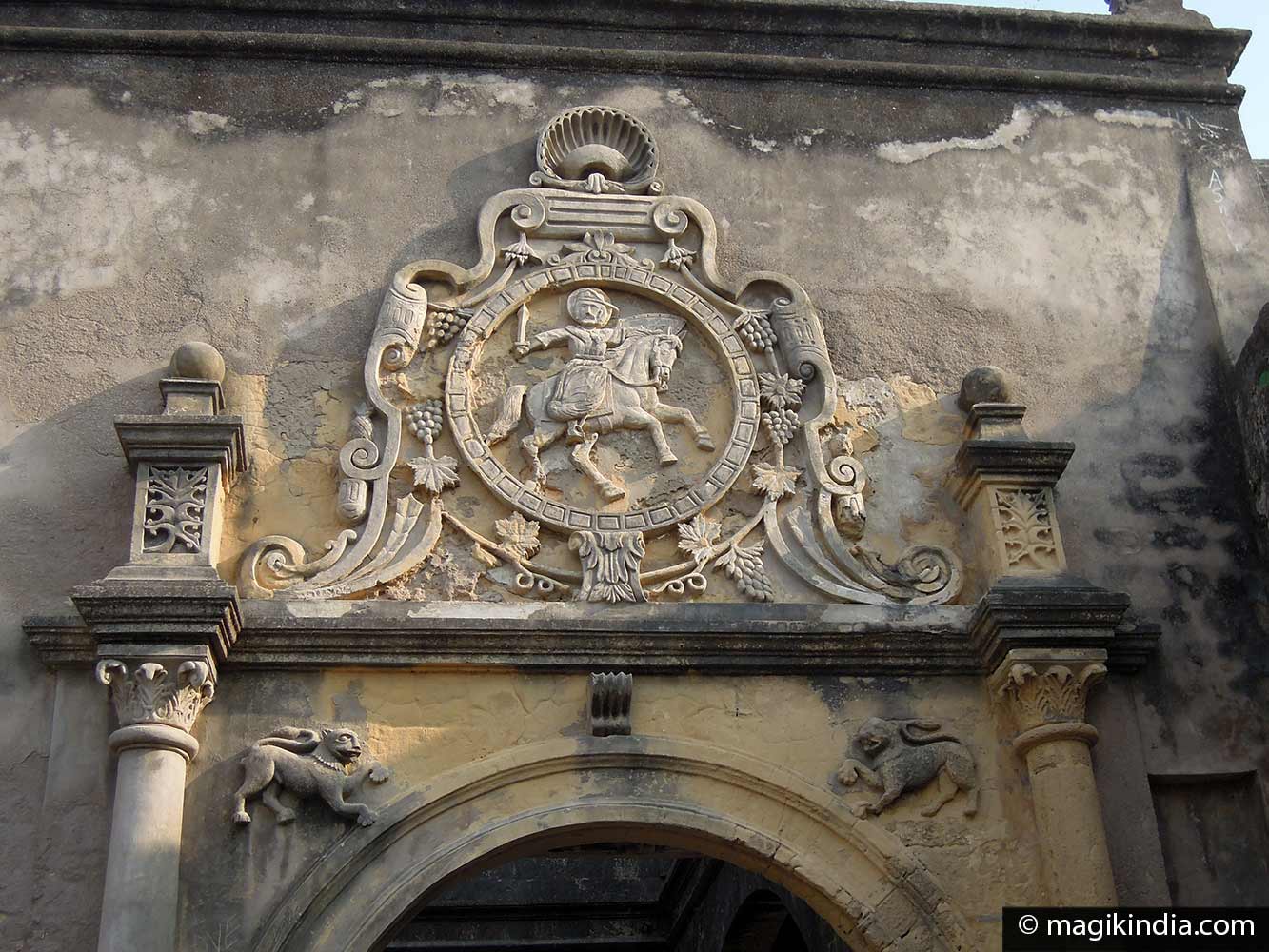
Fortim do Mar
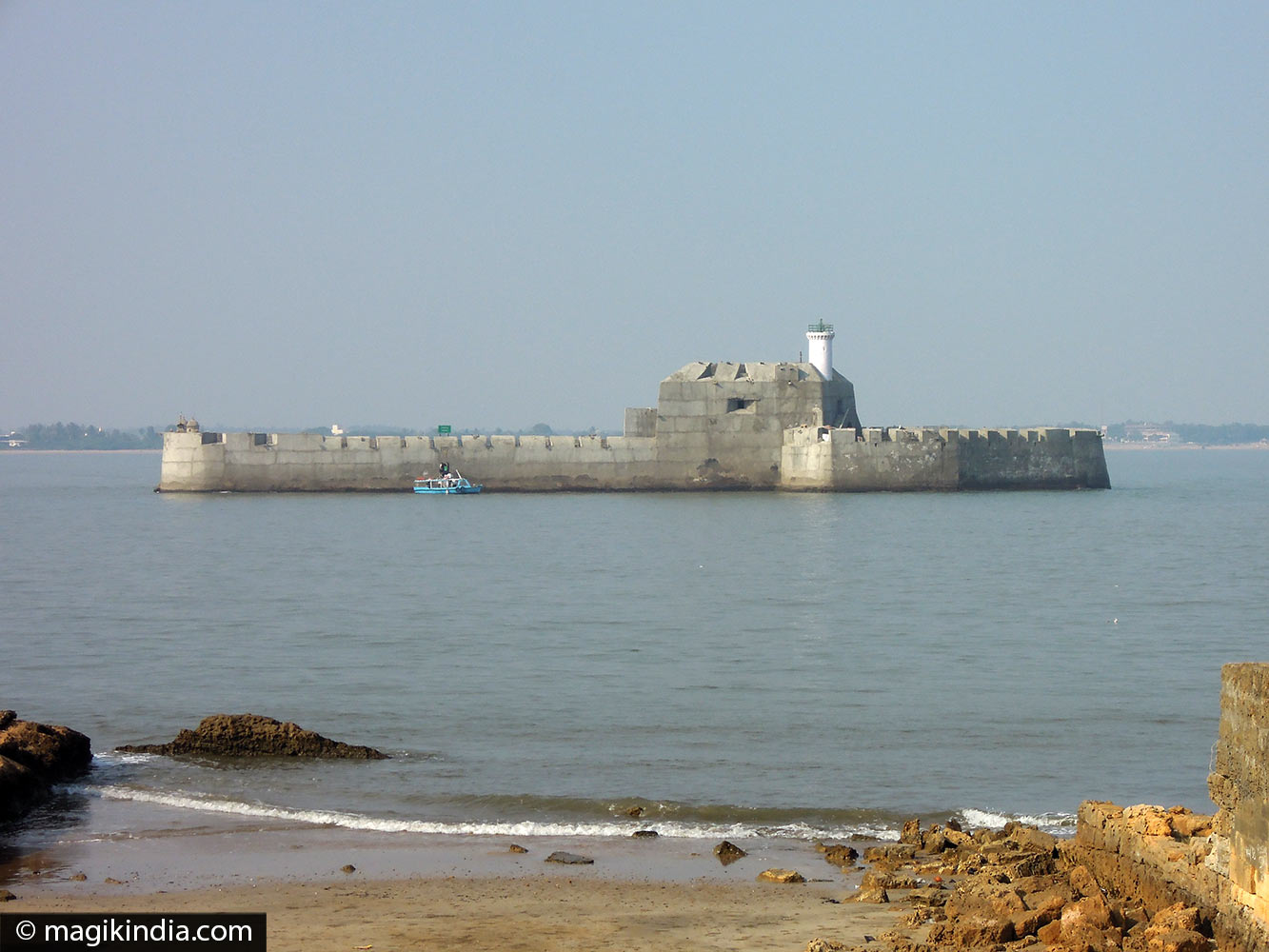
Fortim do Mar also known as the Fortress of Panikota, is a former Diu Jail.
Built by the Portuguese, it is a mile within the ocean from the shore and has a light house and a small chapel dedicated to the lady of sea.
Its structure shaped up in the form of a ship is connected to land through a mysterious tunnel inside it through its basement as an alternative during emergency exit.
It can be reached by boat.
Saint-Paul Church

Saint-Paul Church is located in the town of Diu. This is the largest and is most renowned church on Diu and considered one of the best examples of baroque architecture.
It was founded by the Jesuits in 1600 and rebuilt in 1807; it is still in use. The interior of the church is decorated with intricately carved wood work that is considered one of the most elaborate in any Portuguese church in India.
The front elevation or facade of the church is also said to be one of the most detailed in India.
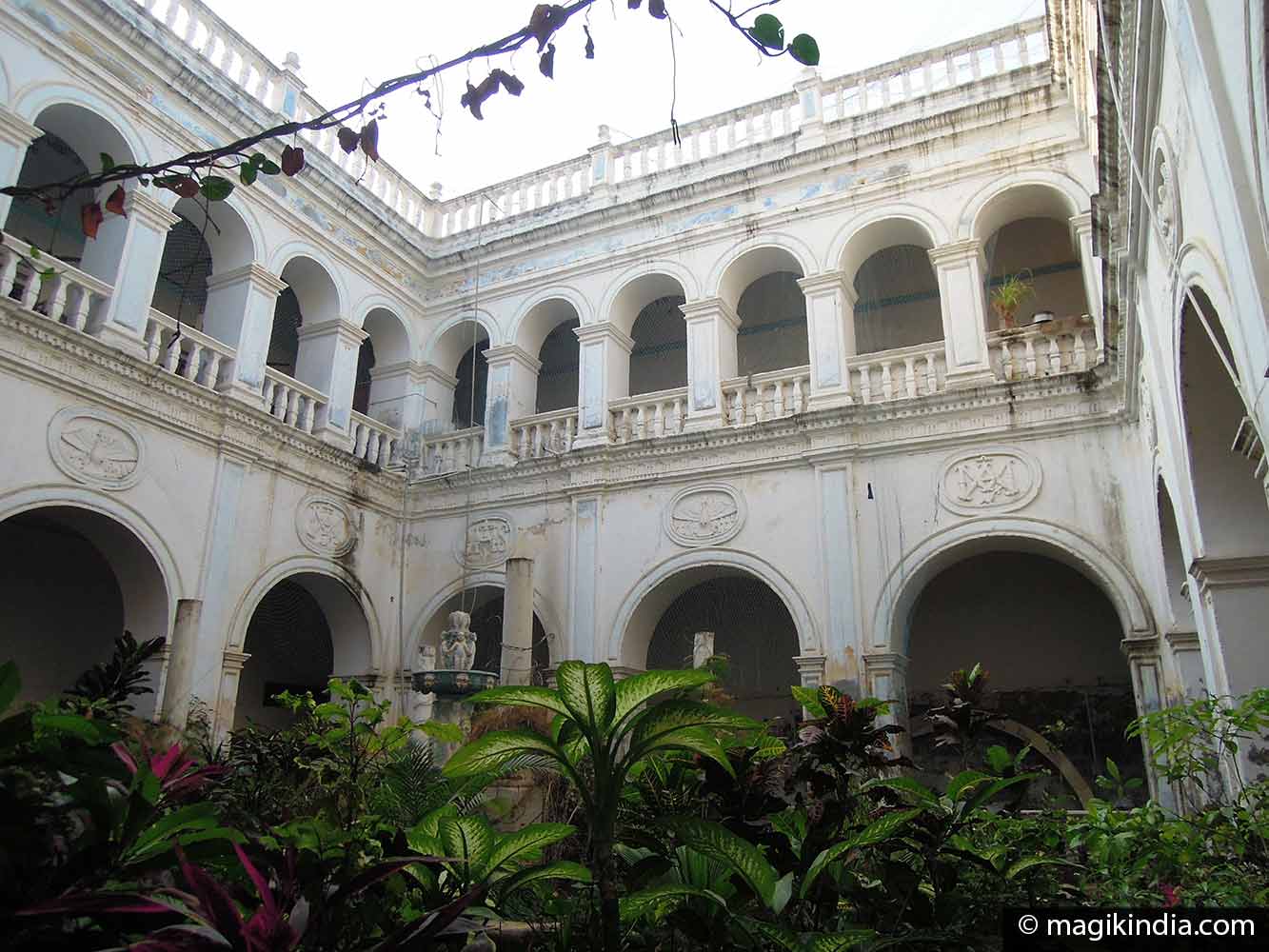
Saint-Thomas Church, Diu Museum
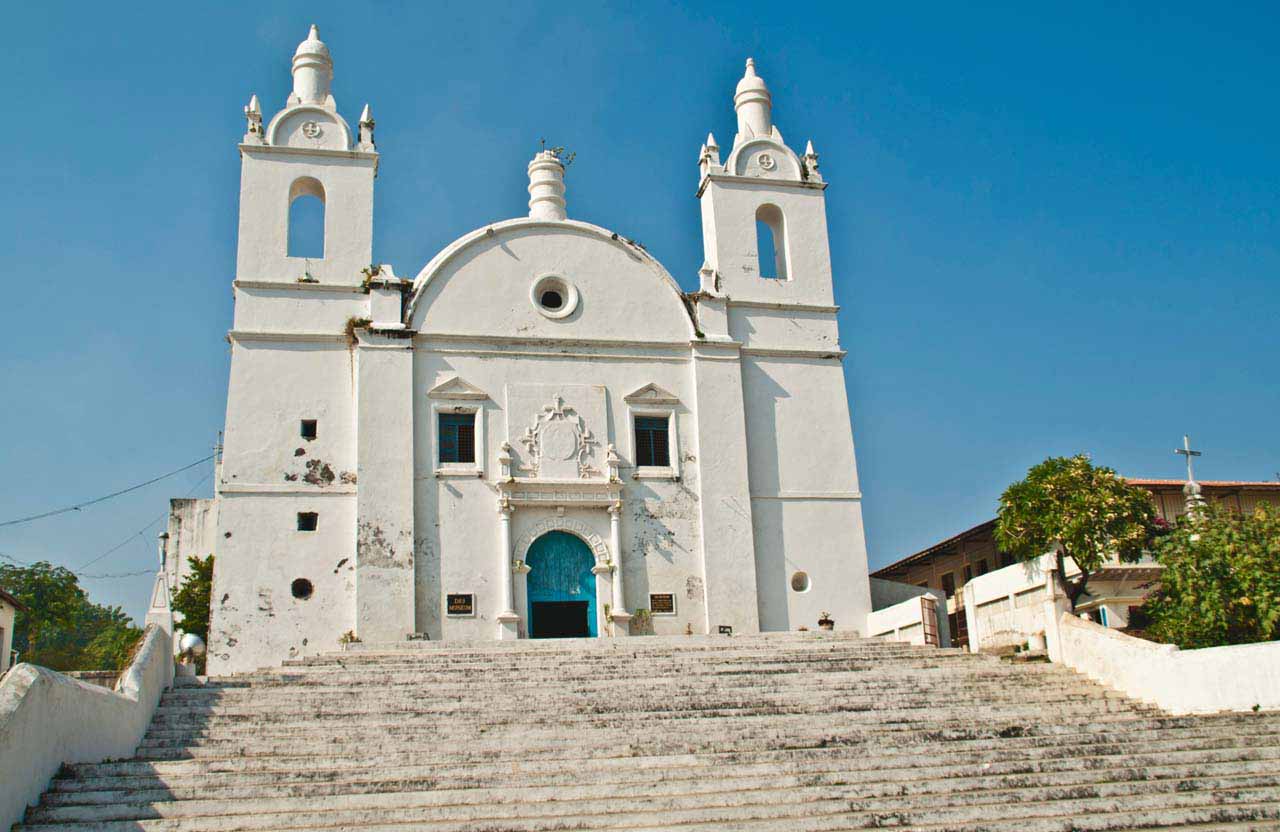
Saint-Thomas church is situated on an elevated platform. It has been converted into a museum which houses antique statues, various stone inscriptions of the earlier rulers, wooden carvings and idols.
The construction of the church is designed in Gothic style architecture.
The white washed exterior of the building still bears the faded portraits and paintings of the Portuguese period.
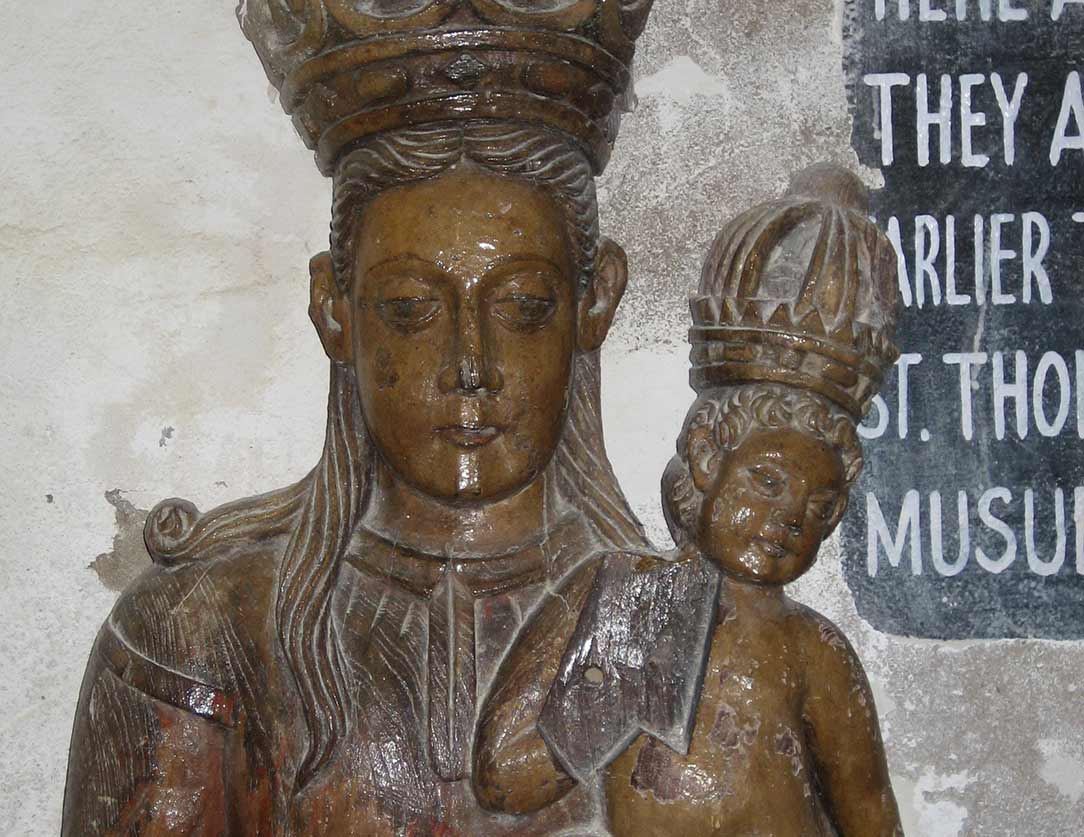
St Francis of Assisi Church
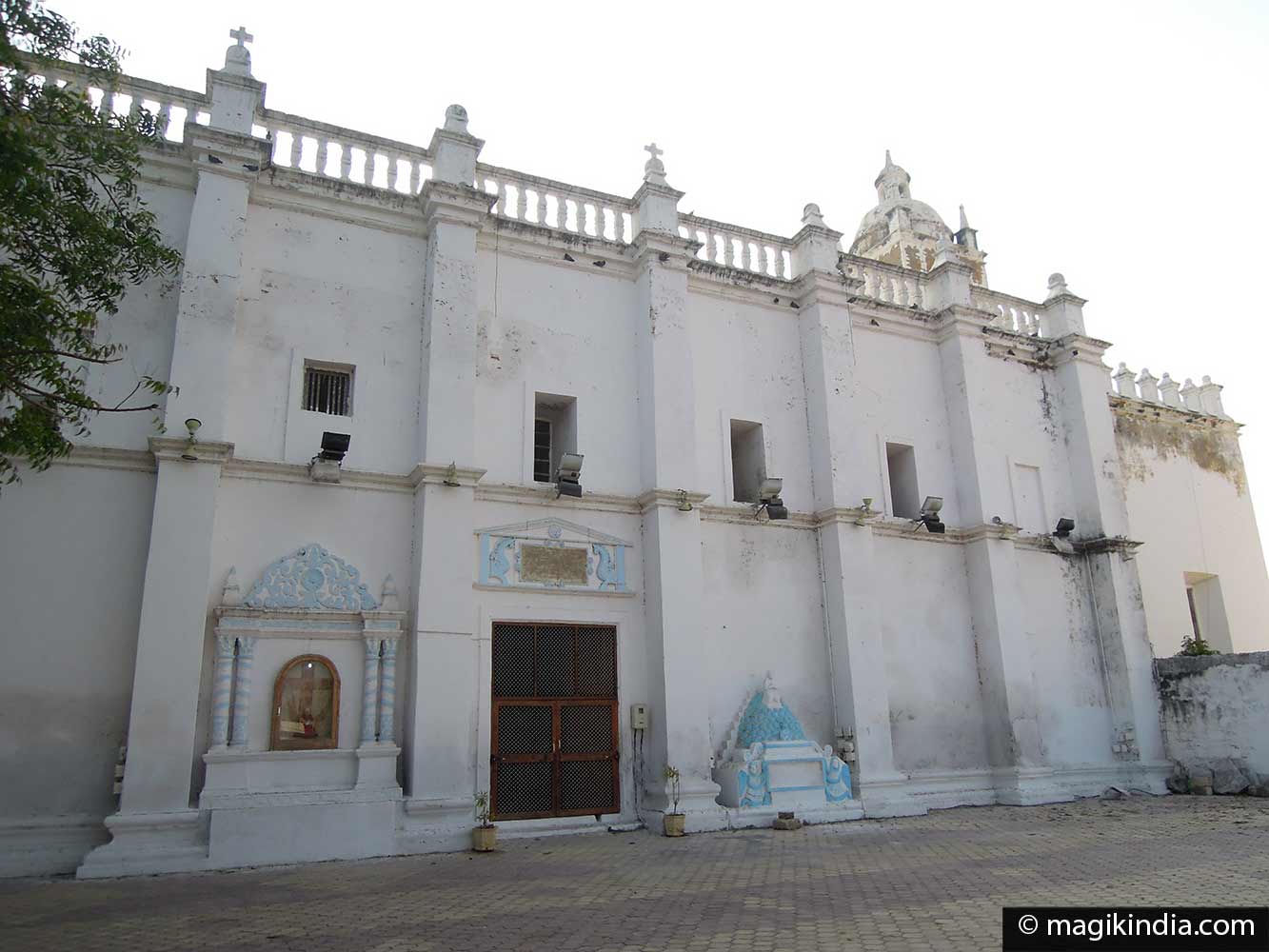
The Church of St. Francis of Assisi was built in 1593, and is the first of the three churches built in Diu.
Located on the hilltop overlooking a plateau, the layout plan of the church replicates similar churches built in Europe.
It has now been converted into a dispensary.
Naida caves
Outside the town walls are the Naida caves, a network of 11 caves where the Portuguese quarried stone for their buildings.
Ghogla, Jallandar & Nagoa beaches
The Ghogla and Jallandar and Chakratirth beaches are near the town, and quite unspoilt.
Nagoa beach is busier and attracts more tourists; it is mostly to this beach that Indian families come to spend the day and picnic.This beach also offers various water sports facilities like parasailing.

Vanakbara harbour (4km)
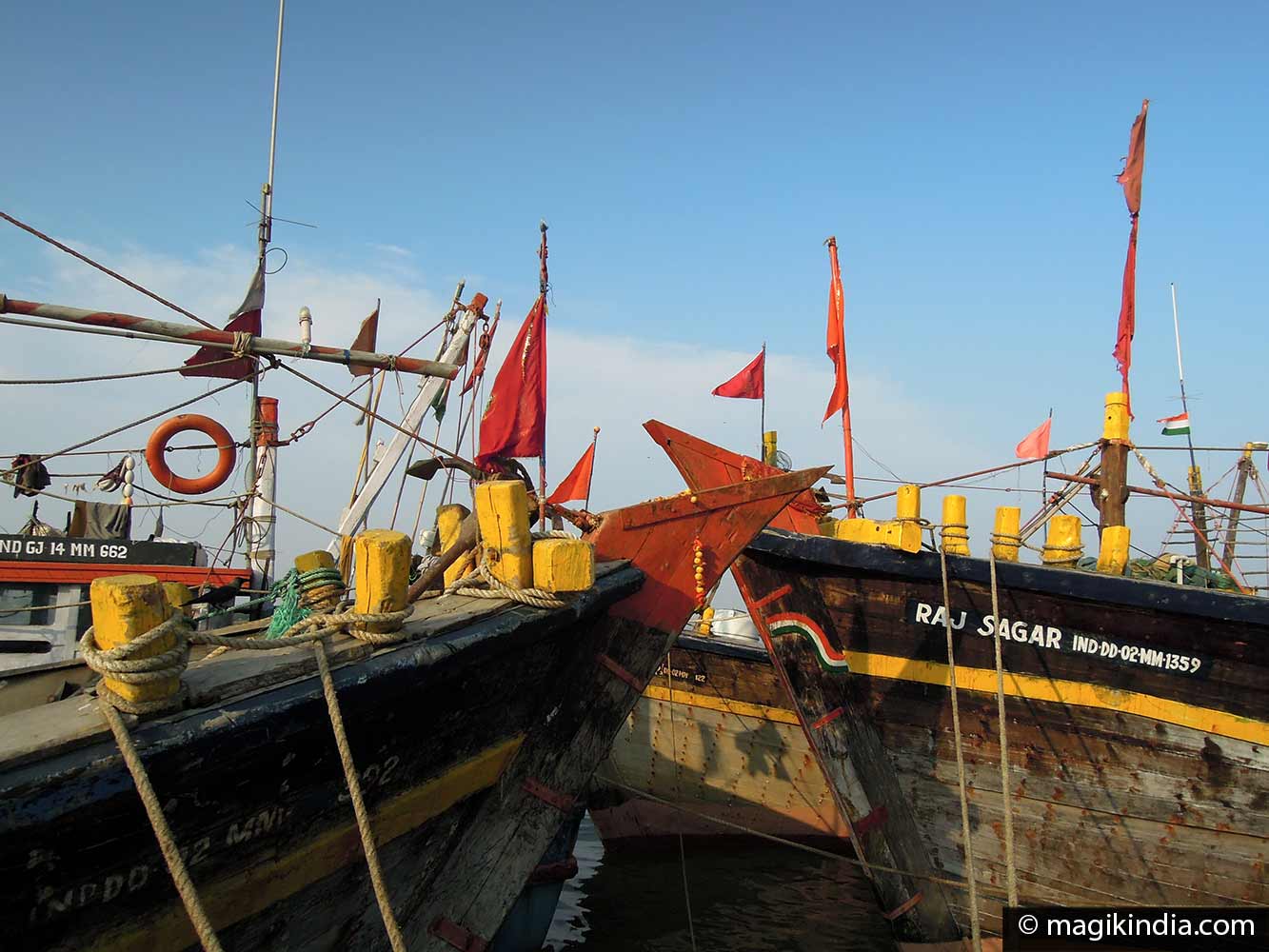 Vanakbara is absolutely worth a look. It is a lovely little fishing village with colourful boats and buzzling activity. It is best to be there in the morning when the boats returns and sells off their catch.
Vanakbara is absolutely worth a look. It is a lovely little fishing village with colourful boats and buzzling activity. It is best to be there in the morning when the boats returns and sells off their catch.
Gangeshwar Temple (3km)

Gangeshwar is an adorable sanctuary in the village of Fudam, 3km from Diu. My favourite place in Diu! This seaside temple to Shiva features five Shiva Lingams battered by the waves as if in a puja (ritual) performed by Mother Nature herself.
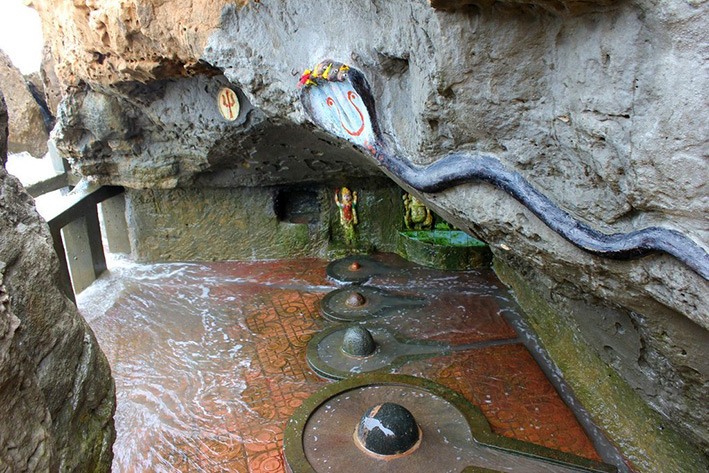
It is believed that these lingas were built by the five Panadava brothers of the famous epic Mahabharata.
A unique and peaceful place. A must.
Mahuva is a small town by the Gulf of Khambhat, 95km from Bhavnagar. It is appreciated for its mild climate and lush vegetation in an otherwise semi-arid region. It’s off the beaten track and the perfect place for those is quest of intriguing little temples, unspoilt countryside and traditional rural life.
Bhavnagar, near the Gulf of Khambhat, is the fifth largest town in the State of Gujarat. Though mainly an industrial town it is a worthwhile stopping point on the way to Palitana or Mahuva.
Bhavnagar was founded in 1724 and named after its founder and ruler Bhavsinhji Gohil (1703-1764). For many years it was a major port for trade with Africa and the Arabian Gulf. It is still an important town for small and medium industry.
And now, let’s visit Bhavnagar!
Takhteshwar Temple
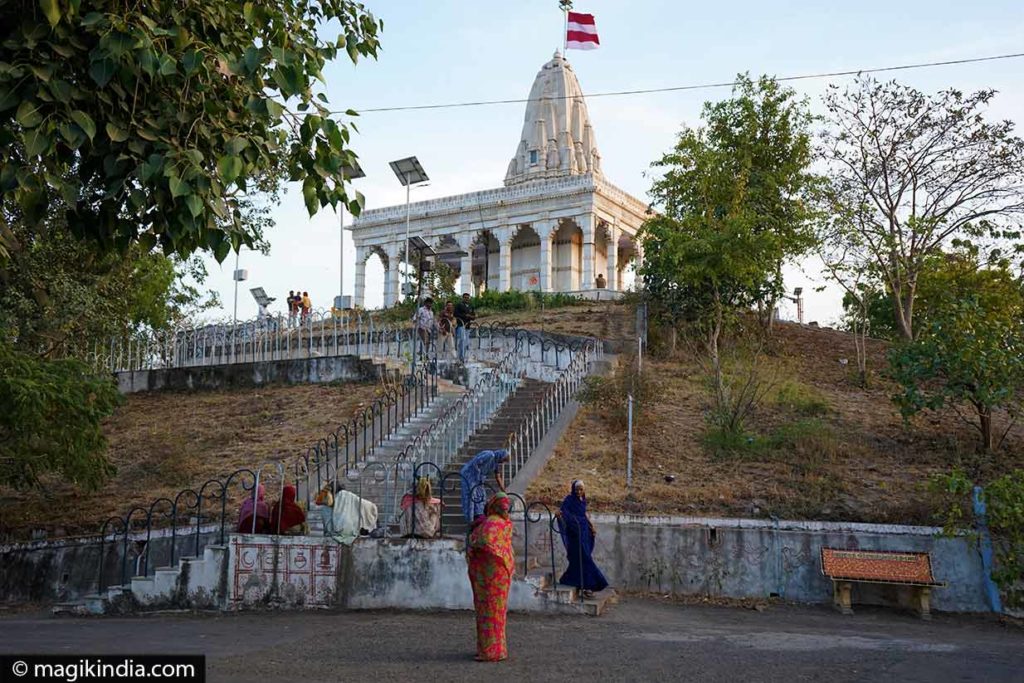
A flight of white marble steps surrounded by trees and greenery lead you to the Takhteshwar temple courtyard.
The Takhteshwar Temple made of white marble is located on a hillock, offering a panoramic view of Bhavnagar.
The temple construction was finished in 1893 AD and was named after Maharaja Takhatsihnji who was one of the influential rulers of Bhavnagar, and the one who had ordered the temple to be built.
Takhteshwar Temple has a shrine with the three eyed Lord Shiva. It is one of the oldest temples of the Gujarat state.
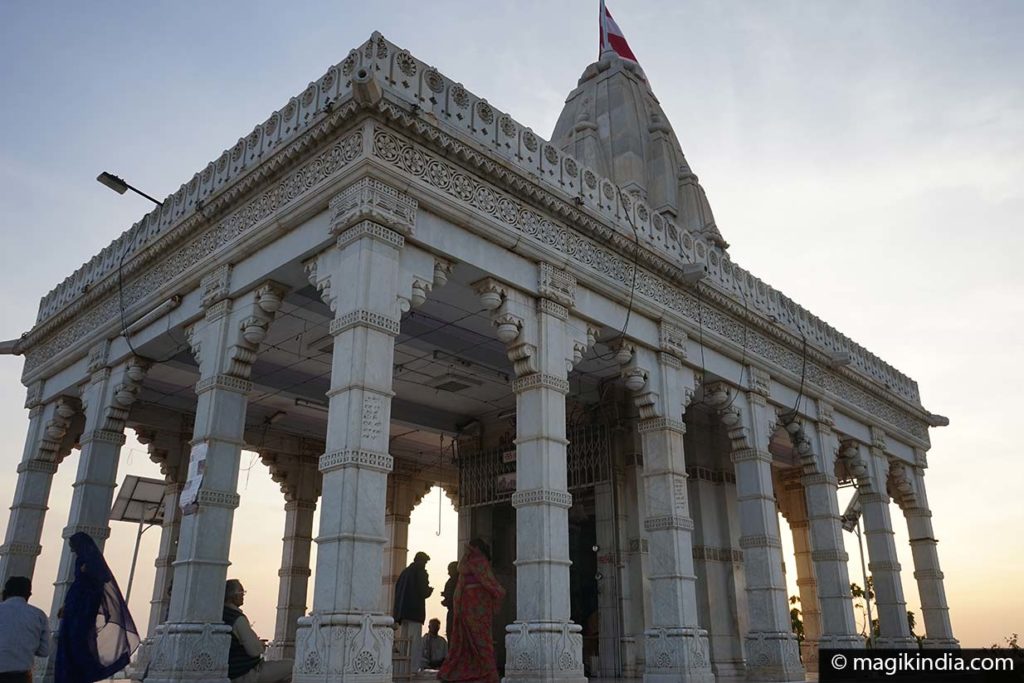
Nilambag Palace
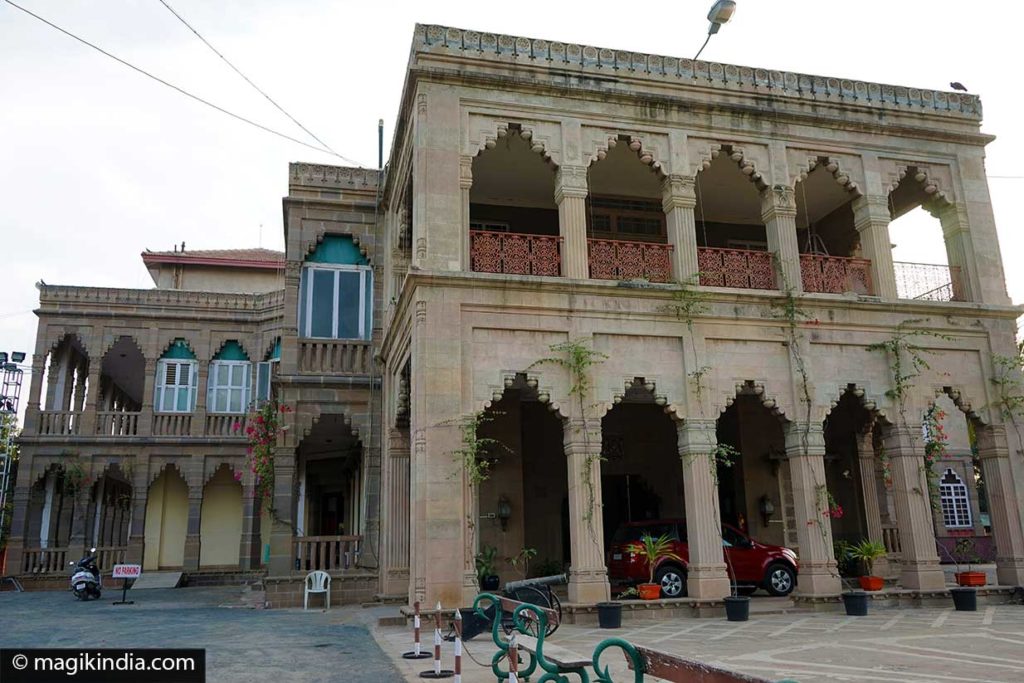
This former royal residence standing in a vast 4ha estate is now a luxury hotel.
It was built in 1894 by British architect William Emerson, who also designed the memorial to Queen Victoria in Kolkata.
The palace combines elements of European and Indian architecture in the style known as Indo-Saracenic.
Non-guests can only visit the outside of the building.
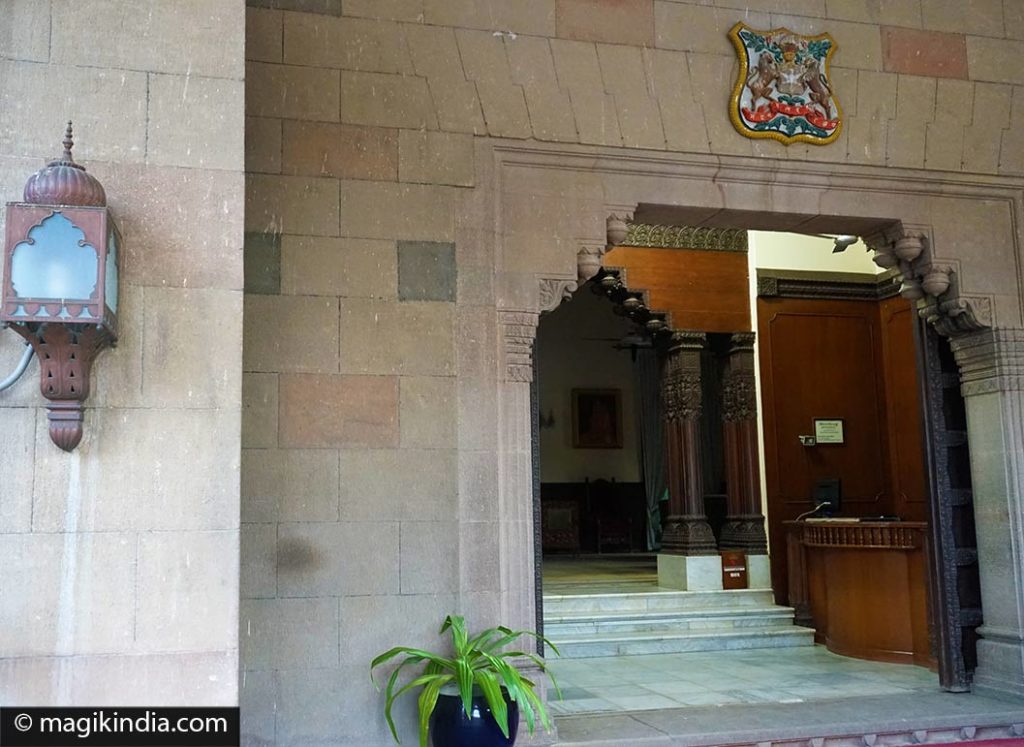
Niklam Beach & Sitokar Mata temple

Niklam is a pretty little beach near the better-known Gogha beach. There is a small temple to Durga beside an ancient banyan tree.
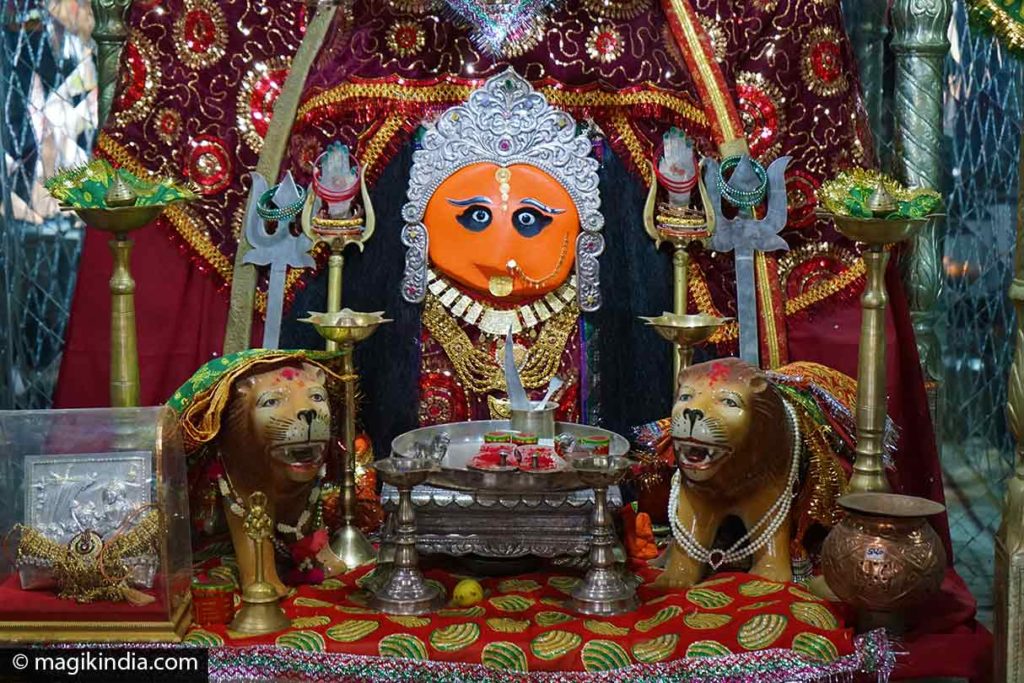
Gaurishankar Lake
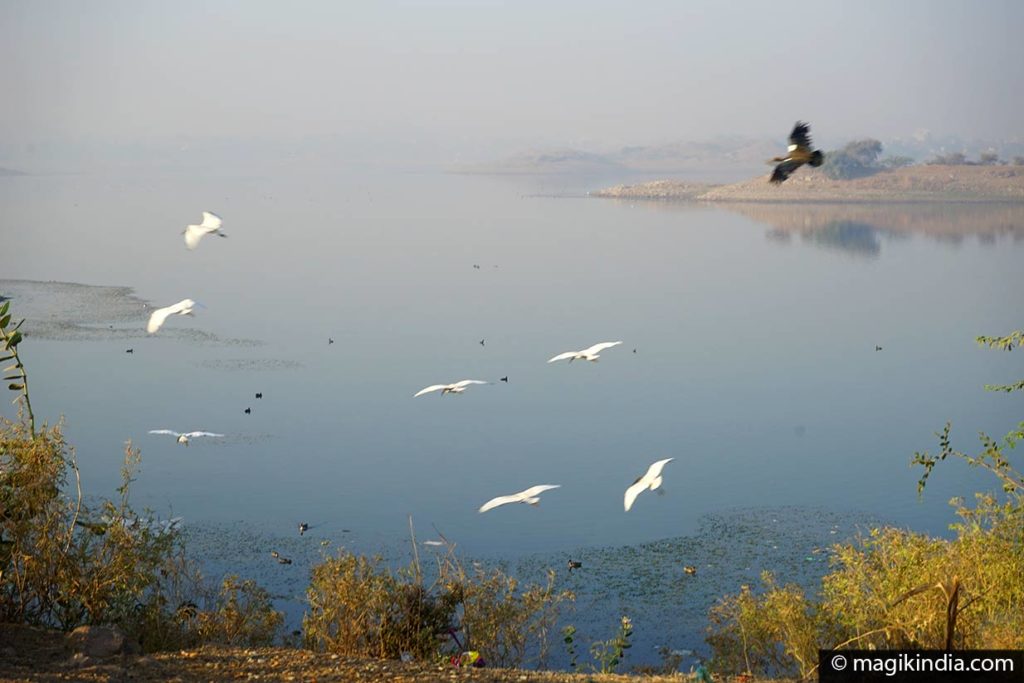
This vast 381ha lake is also known locally as Bor Talav.
It was designed and built in 1872 as a drinking water reservoir. It is a natural refuge for many species of flora and fauna.
Palitana (56 kms)
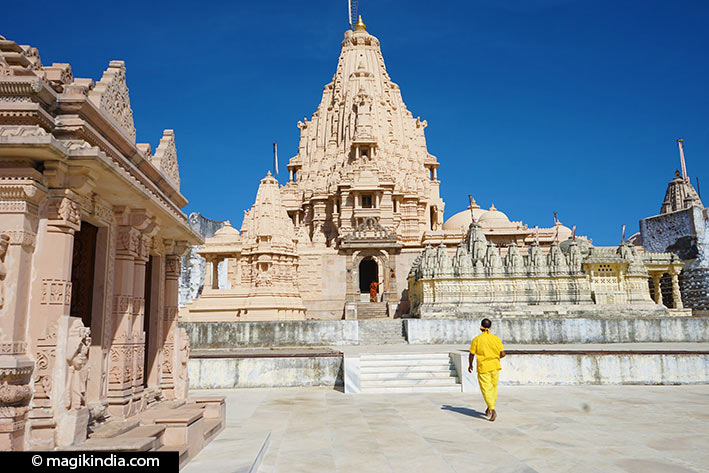
This incredible temple complex perched on Shatrunjaya Hill seems to touch the sky.
Shatrunjaya means “place of victory against inner enemies”.
Along with Mount Abu, Girnar and Chandragiri, Shatrunjaya is one of the four most holy places of the Jain faith… MORE + [/section]
Gopnath Beach (75 kms)
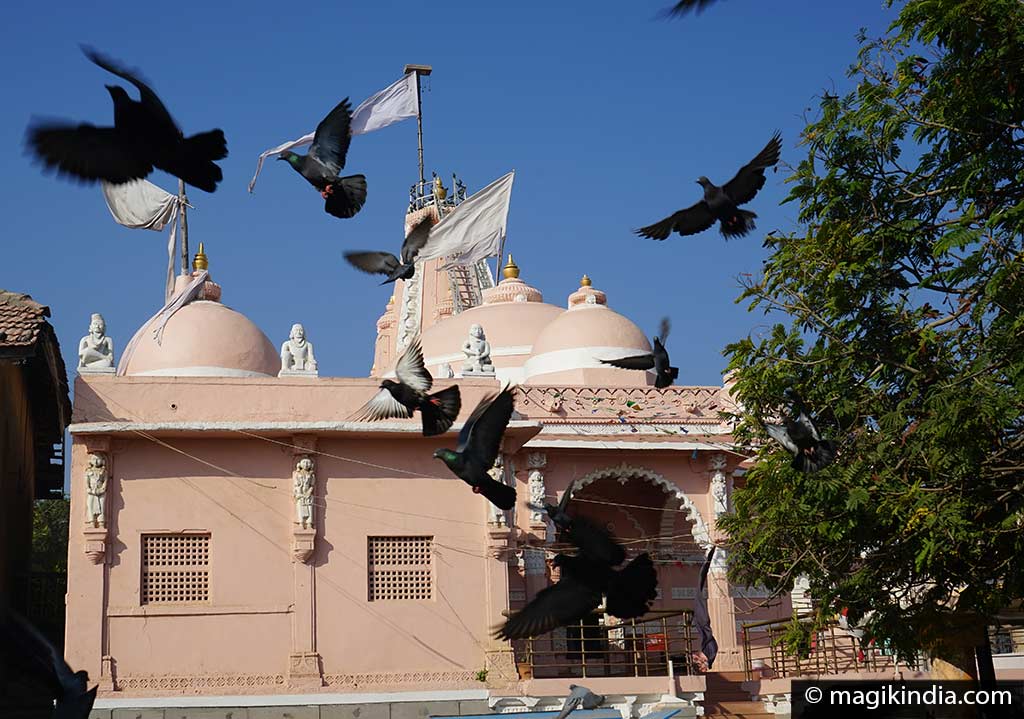
Gopnath beach, 75km from Bhavnagar, is best known for its Shiva temple.
It is in this temple that the devotional poet Narsinh Mehta is said to have had a spiritual revelation 500 years ago.
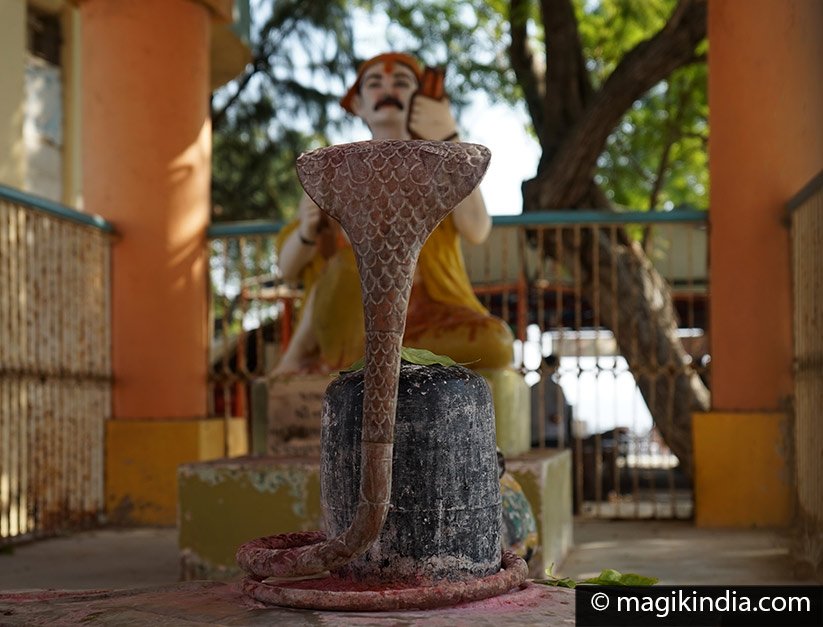
 Champaner is a unique place, way out in the countryside, where you’ll find the vestiges of a town that was the capital of Gujarat state in the 15th century and a number of older archaeological remains. Much is still buried. Champaner is now listed as a World Heritage site. It is also one of the 51 Shakti Peethas, and the life of the place today is centred on Pavagadh Hill to which thousands of pilgrims flock each year to pay homage to the goddess Kali.
Champaner is a unique place, way out in the countryside, where you’ll find the vestiges of a town that was the capital of Gujarat state in the 15th century and a number of older archaeological remains. Much is still buried. Champaner is now listed as a World Heritage site. It is also one of the 51 Shakti Peethas, and the life of the place today is centred on Pavagadh Hill to which thousands of pilgrims flock each year to pay homage to the goddess Kali.

